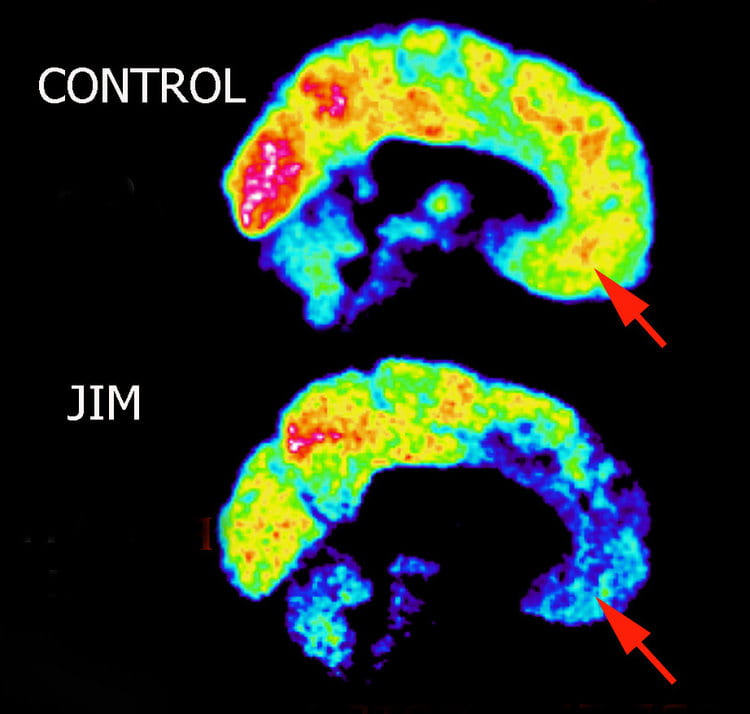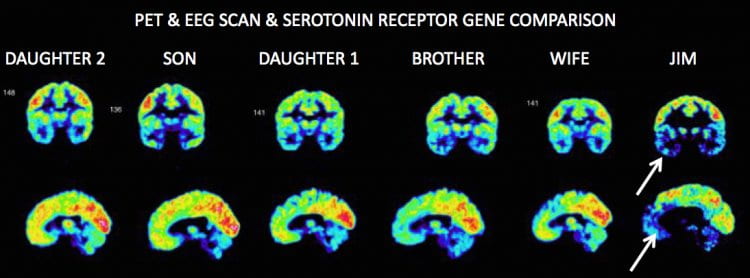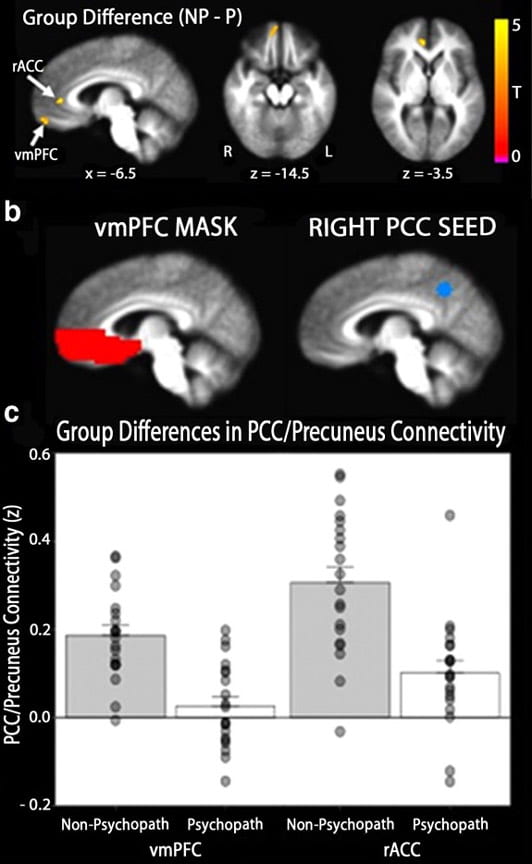Continuing on from my last mental health blog post “Sociopaths are not Psychopaths,” this blog post will focus in on one specific difference between the two groups of -paths. One major physical difference is discovered in the human brain in relation to how much brain activity a person exhibits. Many psychopaths display a distinctive pattern of brain activity after receiving PET scans. The scans below display reduced activity in an area towards the center of the brain called the orbital cortex, which is thought to play a role in regulating our emotions and impulses as well as morality and aggression.

However, brain scans are only one potential indicator of psychopathy. Genetics and family history also very likely play a role in the development of antisocial personality disorder (the official DSM diagnosis of sociopathy/psychopathy). After reviewing his own brain scan as well as performing some of his own research, Researcher James Fallon discovered that he had a genetic variant called MAO-A that may attribute to his self-diagnosed psychopathy.

MAO-A has been linked to psychopathic behavior in studies and is known for making a protein that breaks down certain types of chemical messengers linked to mood (specifically: dopamine, noradrenaline, and serotonin). The scan above shows Fallon’s brain exhibiting large gaps in activity (the black sections) in areas where his wife, daughter, and son display normal activity (the yellow and green sections).
In an article by University of Wisconsin-Madison’s School of Medicine and Public Health, a study done by Dr. Kent Kiehl compared MRI brain scans of 20 prisoners diagnosed with psychopathy with the brain scans of 20 other prisoners who committed similar crimes but were not diagnosed with psychopathy. The results were published in the Journal of Neuroscience (2017) that showed psychopaths’ decision making mirrors that of patients with known damage to their ventromedial prefrontal cortex (vmPFC). This more-so cements the correlation between problems in the vmPFC portion of the brain and antisocial personality disorder.



TEA !!!!!!!